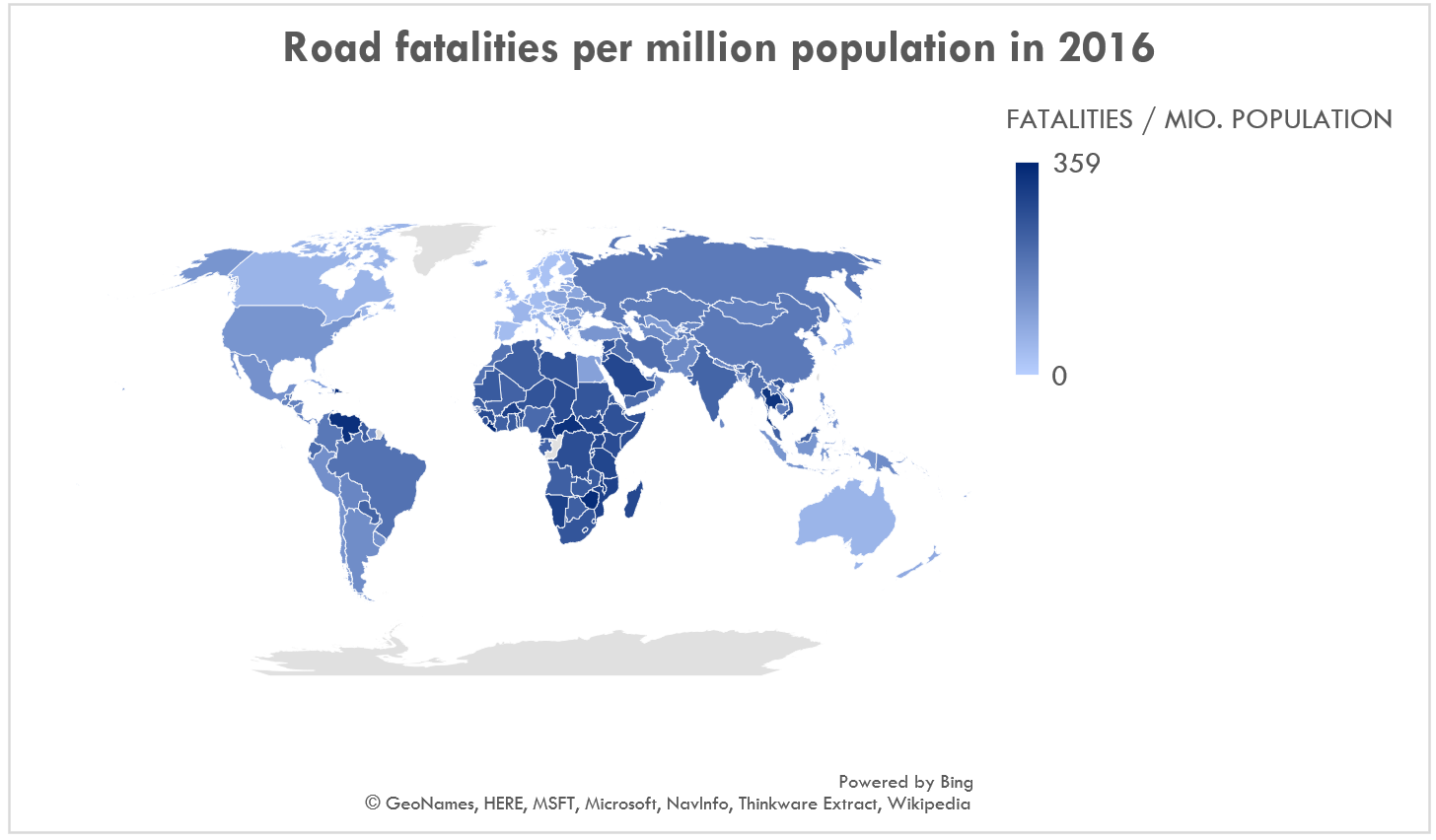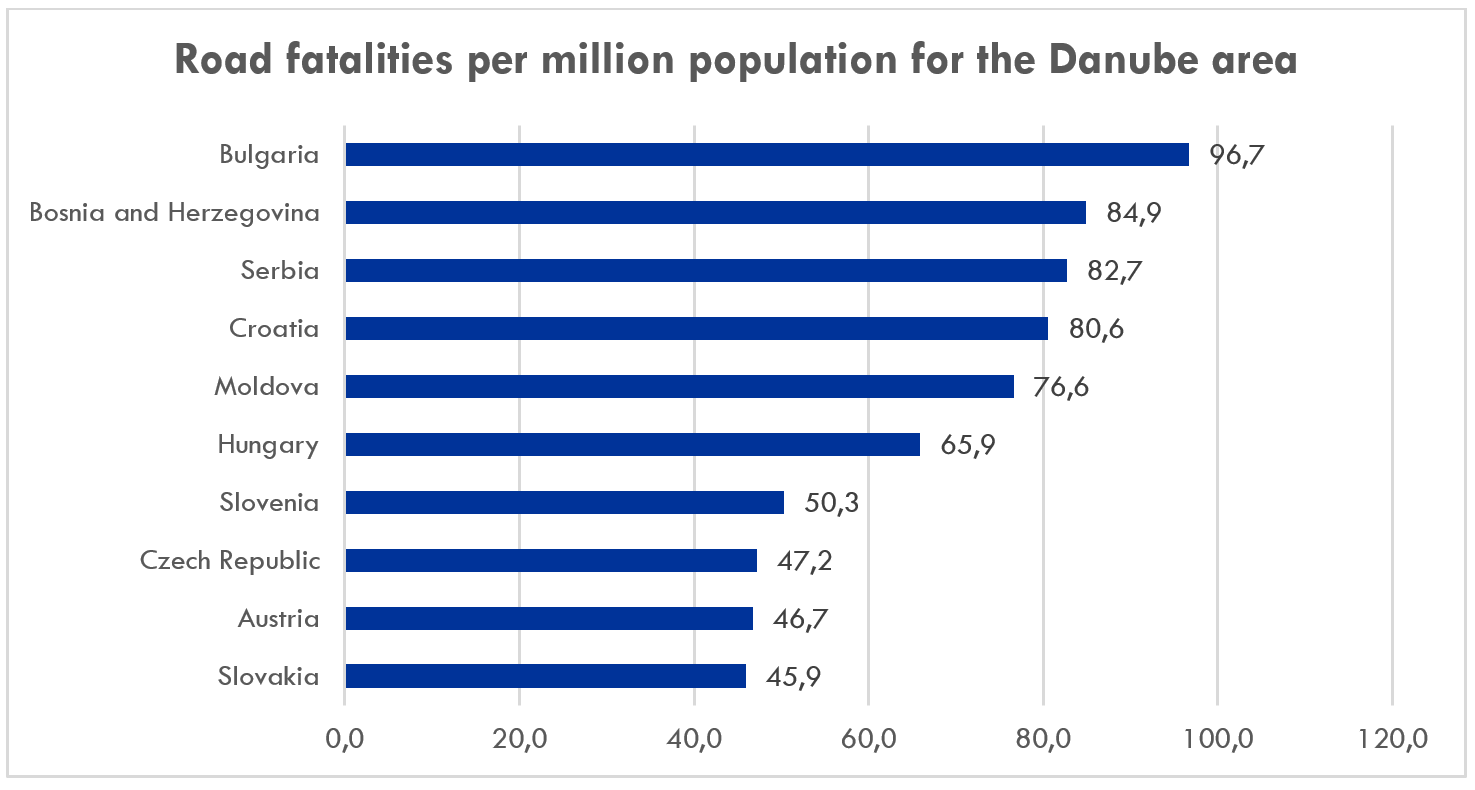RADAR - Status Report on the analysis of road safety performance, knowledge and practice in 10 countries across the Danube area
09-07-2019
The road death toll paid for mobility in ten countries across the Danube area in 2017 is 4,077 fatalities. Road fatalities and serious injuries should not be the price we have to pay for our mobility. Why is it that we continue to accept about 25,000 fatalities and 135,000 serious injuries, right here in the European Union, each and every year? According to the European Commission’s latest study, the external cost of road accidents is estimated at 300 billion euros a year. John Dawson, Board Director at EIRA-EuroRAP stated: “We must treat it as a major public health problem. We would not accept more than a million people being killed globally in any other form of the public disease.”
This is an international phenomenon, with the latest World Health Organisation (WHO) data showing global deaths at 1.35 million each year – which averages at more than 3,000 deaths every day. Traffic accidents are currently the world’s eighth most common cause of death and the most common among young people (5–24 years of age). The WHO predicts that traffic accidents will be the fifth most common cause of death globally by 2030. More motorisation around the world has led to a rise in deaths, and this is expected to rise even further as traffic increases.

Status Report: analysis of road safety performance for ten countries across the Danube area
The RADAR project consortium (Risk Assessment on Danube Area Roads), i.e. ten Project Partners and twelve Associated Strategic Partners, have collected a large amount of data indicating some basic aspects of road safety and published a Status Report, which provides a detailed insight into road safety performance for ten countries across the Danube area.
The countries included in the research are Austria, Bosnia and Herzegovina, Bulgaria, Croatia, Czech Republic, Hungary, Moldova, Serbia, Slovakia, and Slovenia. The report outlines the analysis of the relevant data, knowledge, and practices on road safety approaches and activities in the Danube area countries.
Collected data on infrastructure safety management concerns Infrastructure Safety Directive
Each data set consists of even more detailed information, including general data such as road network length, road network density, crash data, and speed limits, and information on national road safety strategies such as national fatality targets, road safety policies, budgets, and stakeholders.
The data set on infrastructure safety management concerns, for example, the implementation of the Road Infrastructure Safety Directive (2008/96/EC), applied standards for road infrastructure, identification of high-risk roads, availability of Annual Average Daily Traffic (AADT data), priorities for assessing sections or roads to be improved, etc., while the section on infrastructure facilities for VRUs offers an overview of the presence of basic infrastructure intended for pedestrians, cyclists and motorcyclists.
Based on the reported data from participants countries in the RADAR project Status Report, all the countries have transposed Road Infrastructure Safety Directive (2008/96/EC) into their legislations.
The RADAR project Status Report also offers general data concerning national road safety strategies, as well as infrastructure safety management and infrastructure provisions for vulnerable road users. For example, crash data collected for the countries concerned are an indicator of a measure of exposure to road risks, showing how likely road users are to be involved in road accidents. Here we come to direct indicators, or public risk, measured as a ratio between the number of fatalities and number of population in the country.
A factor of two separates “best” from “worst” in the data provided
According to the analysis of available, road safety data within project partners’ countries, Bulgaria is the worst performing country with 97 fatalities per million inhabitants. Following are Bosnia and Herzegovina (84.9), Serbia (82.7) and Croatia (80.6). Czech Republic, Austria, and Slovakia have the lowest number of fatalities per million inhabitants, 47.2, 46.7 and 45.9, respectively.

Comparing the Danube area countries to Europe and WHO regions (Americas, Western Pacific, Eastern Mediterranean, Southeast Asia, and Africa) per million population, data shows that European roods are the safest – even compared with the roads in Danube area countries. However, John Dawson, Board Director at EIRA-EuroRAP, explains “…that does not mean Europe does not have an appalling problem with a quarter of a million people expected to be killed in the next decade. And even in the very safest countries, we know it is relatively easy to reduce road deaths if we just apply the knowledge we have systematically on a proportioned scale. We need an attack on all the simple factors that we know that create an unsafe road system including a common and consistent way of measuring the safety of our infrastructure”.
RADAR project demands for greater road safety
Mobility comes with responsibilities. As vehicle occupants, motorists, motorcyclists, cyclists, and pedestrians, we all play our part in our participation on the roads every day and, in turn, define how safe our roads are. As such, road safety is the responsibility of all of us.
Status Report as a contributor in identifying and reducing risk on roads
The Status Report contributes to identifying and reducing risk on the Danube area road network, enhancing transnational cooperation of relevant stakeholders and road authorities in charge of national road networks, as well as to helping build capacities of Project Partners, Associated Strategic Partners, road safety engineers, and professionals. Finally, it also contributes to making the Danube Infrastructure Road Safety Improvement Strategy and Action Plan to be used by participating countries from the Danube area to improve safety on their roads.
Read more about Status Report here.

